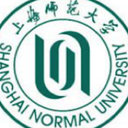Cytometry of ATM activation and histone H2AX phosphorylation to estimate extent of DNA damage induced by exogenous agents.
الكلمات الدالة
نبذة مختصرة
This review covers the topic of cytometric assessment of activation of Ataxia telangiectasia mutated (ATM) protein kinase and histone H2AX phosphorylation on Ser139 in response to DNA damage, particularly the damage that involves formation of DNA double-strand breaks. Briefly described are molecular mechanisms associated with activation of ATM and the downstream events that lead to recruitment of DNA repair machinery, engagement of cell cycle checkpoints, and activation of apoptotic pathway. Examples of multiparameter analysis of ATM activation and H2AX phosphorylation vis-a-vis cell cycle phase position and induction of apoptosis that employ flow- and laser scanning-cytometry are provided. They include cells treated with a variety of exogenous genotoxic agents, such as ionizing and UV radiation, DNA topoisomerase I (topotecan) and II (mitoxantrone, etoposide) inhibitors, nitric oxide-releasing aspirin, DNA replication inhibitors (aphidicolin, hydroxyurea, thymidine), and complex environmental carcinogens such as present in tobacco smoke. Also presented is an approach to identify DNA replicating (BrdU incorporating) cells based on selective photolysis of DNA that triggers H2AX phosphorylation. Listed are strategies to distinguish ATM activation and H2AX phosphorylation induced by primary DNA damage by genotoxic agents from those effects triggered by DNA fragmentation that takes place during apoptosis. While we review most published data, recent new findings also are included. Examples of multivariate analysis of ATM activation and H2AX phosphorylation presented in this review illustrate the advantages of cytometric flow- and image-analysis of these events in terms of offering a sensitive and valuable tool in studies of factors that induce DNA damage and/or affect DNA repair and allow one to explore the linkage between DNA damage, cell cycle checkpoints and initiation of apoptosis.




